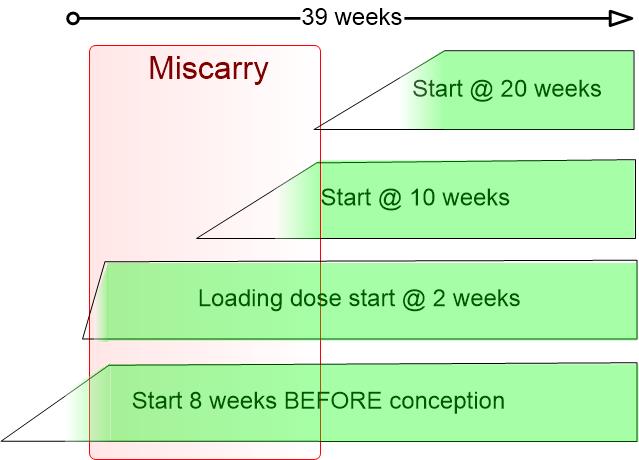Pre-term birth rate cut in half with 1000 milligrams of Omega-3 (if initially low) – RCT
Higher dose docosahexaenoic acid supplementation during pregnancy and early preterm birth: A randomised, double-blind, adaptive-design superiority trial
Eclinical Medicine – Lancet May 17, 2021DOI:https://doi.org/10.1016/j.eclinm.2021.100905
Susan E Carlson. Byron J Gajewski, Christina J Valentine, Elizabeth H Kerling, Carl P Weiner, Michael Cackovic, et al.
 1. Preterm births are VERY costly – Feb 2017 contains this cost-analysis
{include}
---
1. FDA now allows claims for both:
* FDA allows the claim that Vitamin D “supports healthy pregnancies and promotes full-term births” – Oct 2019
* FDA allows 2 specific Vitamin D and 2 Omega-3 health claims - 2019
1. Preterm births are VERY costly – Feb 2017 contains this cost-analysis
{include}
---
1. FDA now allows claims for both:
* FDA allows the claim that Vitamin D “supports healthy pregnancies and promotes full-term births” – Oct 2019
* FDA allows 2 specific Vitamin D and 2 Omega-3 health claims - 2019
📄 Download the PDF from VitaminDWiki
Background
Several meta analyses have concluded n-3 fatty acids, including docosahexaenoic acid (DHA), reduce early preterm birth (EPB, < 34 weeks), however, the amount of DHA required is unclear. We hypothesized that 1000 mg DHA per day would be superior to 200 mg, the amount in most prenatal supplements.
Methods
This randomised, multicentre, double-blind, adaptive-design, superiority trial was conducted in three USA medical centres. Women with singleton pregnancies and 12 to 20 weeks gestation were eligible. randomization was generated in SAS® by site in blocks of 4. The planned adaptive design periodically generated allocation ratios favoring the better performing dose. Managing study personnel were blind to treatment until 30 days after the last birth. The primary outcome was EPB by dose and by enrolment DHA status (low/high). Bayesian posterior probabilities (pp) were determined for planned efficacy and safety outcomes using intention-to-treat. The study is registered with ClinicalTrials.gov (NCT02626299) and closed to enrolment.
Findings
Eleven hundred participants (1000 mg, n = 576; 200 mg, n = 524) were enrolled between June 8, 2016 and March 13, 2020 with the last birth September 5, 2020. 1032 (n = 540 and n = 492) were included in the primary analyses. The higher dose had a lower EPB rate [1.7% (9/540) vs 2.4% (12/492), pp=0.81] especially if participants had low DHA status at enrolment [2.0% (5/249) vs 4.1%, (9/219), pp=0.93]. Participants with high enrolment DHA status did not realize a dose effect [1000 mg: 1.4% (4/289); 200 mg: 1.1% (3/271), pp = 0.57]. The higher dose was associated with fewer serious adverse events (maternal: chorioamnionitis, premature rupture of membranes and pyelonephritis; neonatal: feeding, genitourinary and neurologic problems, all pp>0.90).
Interpretation
Clinicians could consider prescribing 1000 mg DHA daily during pregnancy to reduce EPB in women with low DHA status if they are able to screen for DHA.
Reviewer comment: “The authors noted negative pregnancy outcomes (such as gestational diabetes, preeclampsia, Cesarean delivery, or others), maternal and infant health status (including DHA levels), and serious adverse events post-delivery (such as birth defects, death, or others)”
